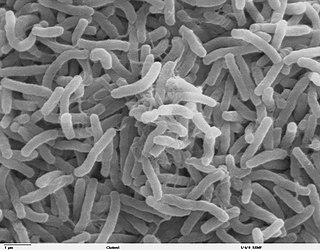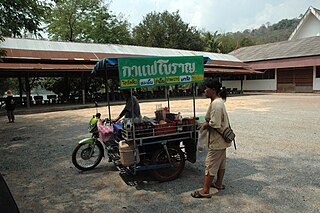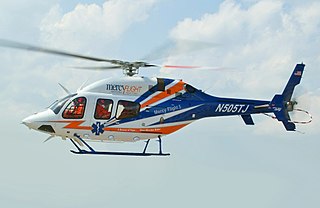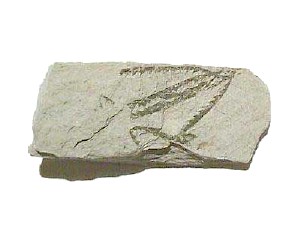Related Research Articles

Vibrio cholerae is a species of Gram-negative, facultative anaerobe and comma-shaped bacteria. The bacteria naturally live in brackish or saltwater where they attach themselves easily to the chitin-containing shells of crabs, shrimps, and other shellfish. Some strains of V. cholerae are pathogenic to humans and cause a deadly disease cholera, which can be derived from the consumption of undercooked or raw marine life species.

The Battle of Rocroi, fought on 19 May 1643, was a major engagement of the Thirty Years' War between a French army, led by the 21-year-old Duke of Enghien and Spanish forces under General Francisco de Melo only five days after the accession of Louis XIV to the throne of France after his father's death. Rocroi shattered the myth of invincibility of the Spanish Tercios, the terrifying infantry units that had dominated European battlefields for the previous 120 years. The battle is therefore often considered to mark the end of Spanish military greatness and the beginning of French hegemony in Europe. After Rocroi, the Spanish abandoned the Tercio system and adopted the line infantry doctrine used by the French.

Kalasin is a town in northeast Thailand, the capital of Kalasin Province. As of 2015, it has a population of 34,429 It covers the whole tambon Kalasin of the Mueang Kalasin District, an area of 16.96 km2 (6.55 sq mi). Kalasin lies 513 kilometres (319 mi) north-northeast of Bangkok by road.
German submarine U-429 was a Type VIIC U-boat of Nazi Germany's Kriegsmarine originally built for the Italian Regia Marina during World War II. Her keel was laid down on 14 September 1942 by Danziger Werft of Danzig. She was then commissioned as S-4 on 14 July 1943 under the command of an Italian captain.

The A429 is a main road in England that runs in a north-northeasterly direction from junction 17 of the M4 motorway to Coventry in the West Midlands.
Mycobacterium phlei is a species of acid-fast bacteria in the genus Mycobacterium. It is characterized as one of the fast-growing mycobacteria. M. phlei has only occasionally been isolated in human infections, and patients infected with M. phlei generally respond well to anti-mycobacterial therapy. M. phlei has an unusually high GC-content of 73%.

The Bell 429 GlobalRanger is a light, twin-engine helicopter developed by Bell Helicopter and Korea Aerospace Industries. First flight of the Bell 429 prototype took place on February 27, 2007, and the aircraft received type certification on July 1, 2009. The Bell 429 is capable of single-pilot IFR and Runway Category A operations.

Johannisthaler Chaussee is a Berlin U-Bahn station located on the . It was opened in 1970 by its architect Rainer G. Rümmler, and got the addition "Gropiusstadt" in 1972.

Tetragraptus is an extinct genus of graptolites from the Ordovician period.
Ehrlichia Wisconsin HM543746 is an unnamed tick bacterium that spread through Minnesota and Wisconsin in 2009 and is similar to Ehrlichia muris.
Copelatus insuetus is a species of diving beetle. It is part of the genus Copelatus in the subfamily Copelatinae of the family Dytiscidae. It was described by Félix Guignot in 1941.
Propionigenium modestum is a gram-negative, strictly anaerobic organism. It is rod-shaped and around 0.5-0.6 x 0.5-2.0μm in size. It is important in the elucidation of mechanism of ATP synthase.
Ilyobacter delafieldii is a motile, gram-negative, obligately anaerobic rod-shaped bacteria, with type strain 10cr1. It is notable for metabolising beta-Hydroxybutyric acid.

The R429 road is a regional road in Ireland, located in County Laois and County Kildare.
Microbacterium ginsengisoli is a Gram-positive, heterotrophic, strictly aerobic bacterium from the genus of Microbacterium which has been isolated from soil from a ginseng field in Daejeon in South Korea.
Tsukamurella pulmonis is a Gram-positive and aerobic bacterium from the genus of Tsukamurella which has been isolated from the sputum from a patient with lung tuberculosis in Germany.
HMS LST-429 was a United States Navy LST-1-class tank landing ship that was transferred to the Royal Navy during World War II. As with many of her class, the ship was never named. Instead, she was referred to by her hull designation.

Epsilon variant, also known as CAL.20C and referring to two PANGO lineages B.1.427 and B.1.429, is one of the variants of SARS-CoV-2, the virus that causes COVID-19. It was first detected in California, USA in July 2020.
Enterovibrio calviensis is a halophilic and facultatively oligotrophic bacterium species from the genus of Enterovibrio which has been isolated from sea water from the Bay of Calvi from the Mediterranean Sea in France.
References
- 1 2 Parte, A.C. "Ilyobacter". LPSN .
- 1 2 "Ilyobacter insuetus". www.uniprot.org.
- ↑ "Details: DSM-6831". www.dsmz.de.
- ↑ Brune, A; Evers, S; Kaim, G; Ludwig, W; Schink, B (March 2002). "Ilyobacter insuetus sp. nov., a fermentative bacterium specialized in the degradation of hydroaromatic compounds". International Journal of Systematic and Evolutionary Microbiology. 52 (Pt 2): 429–32. doi: 10.1099/00207713-52-2-429 . PMID 11931152.